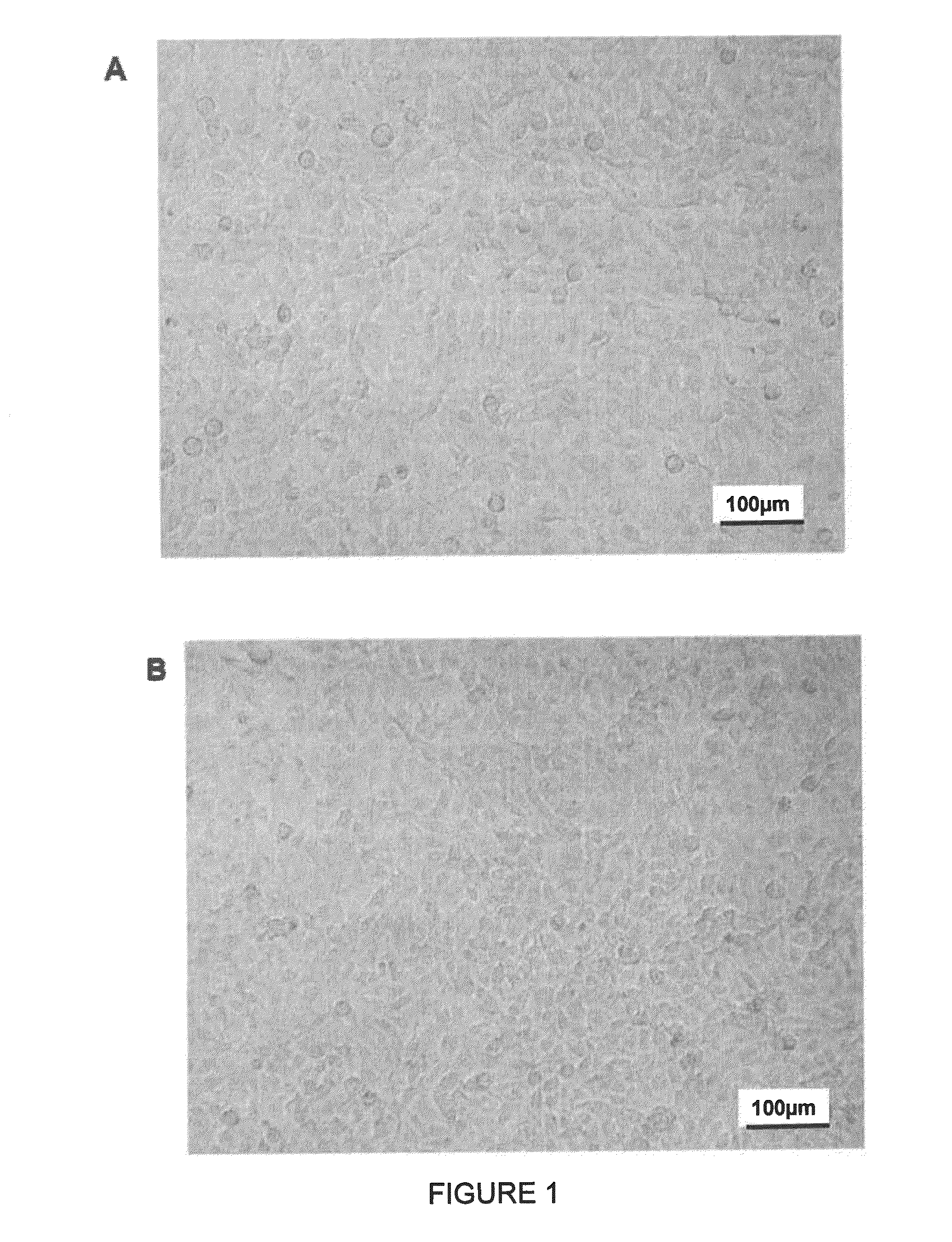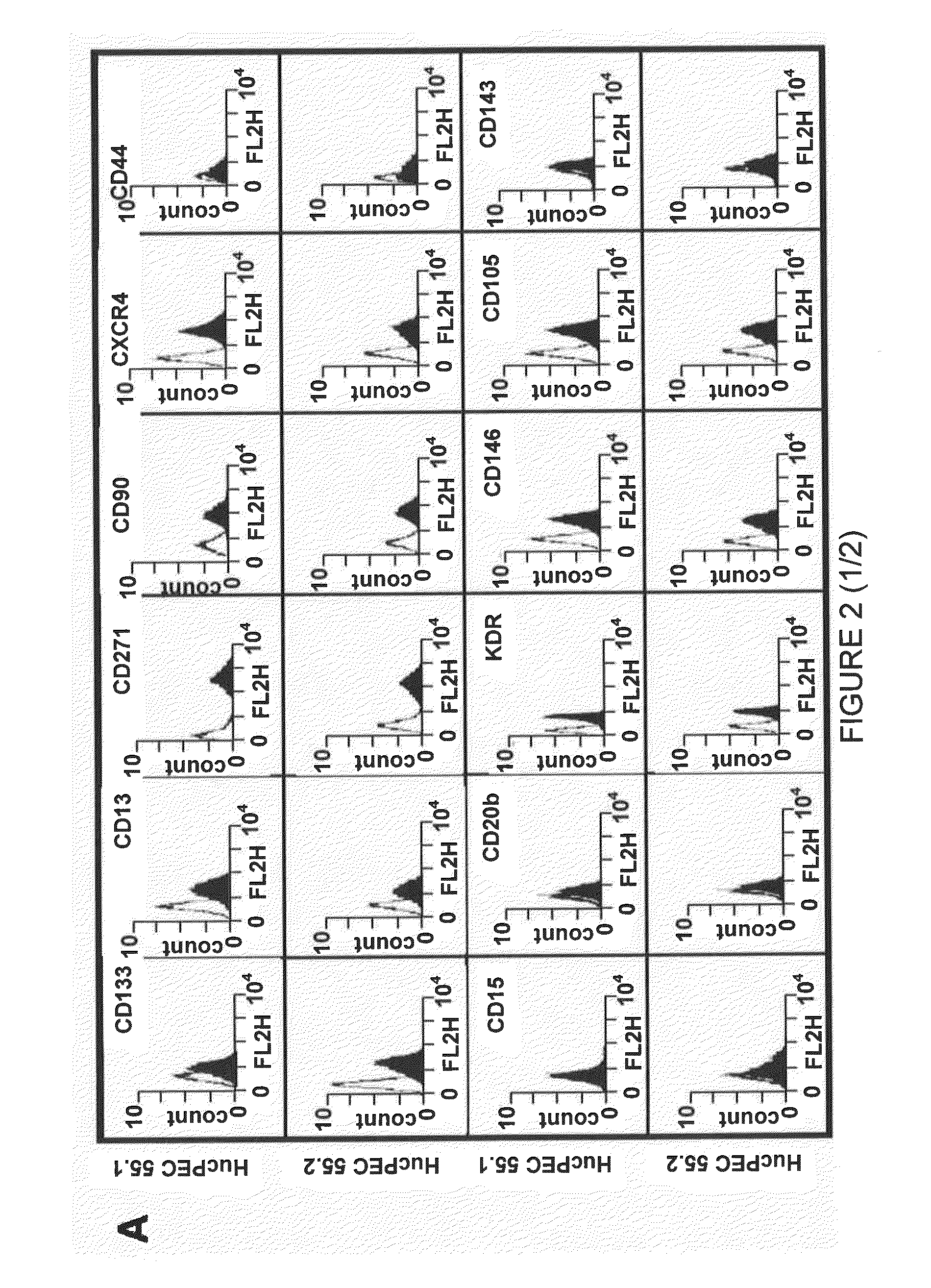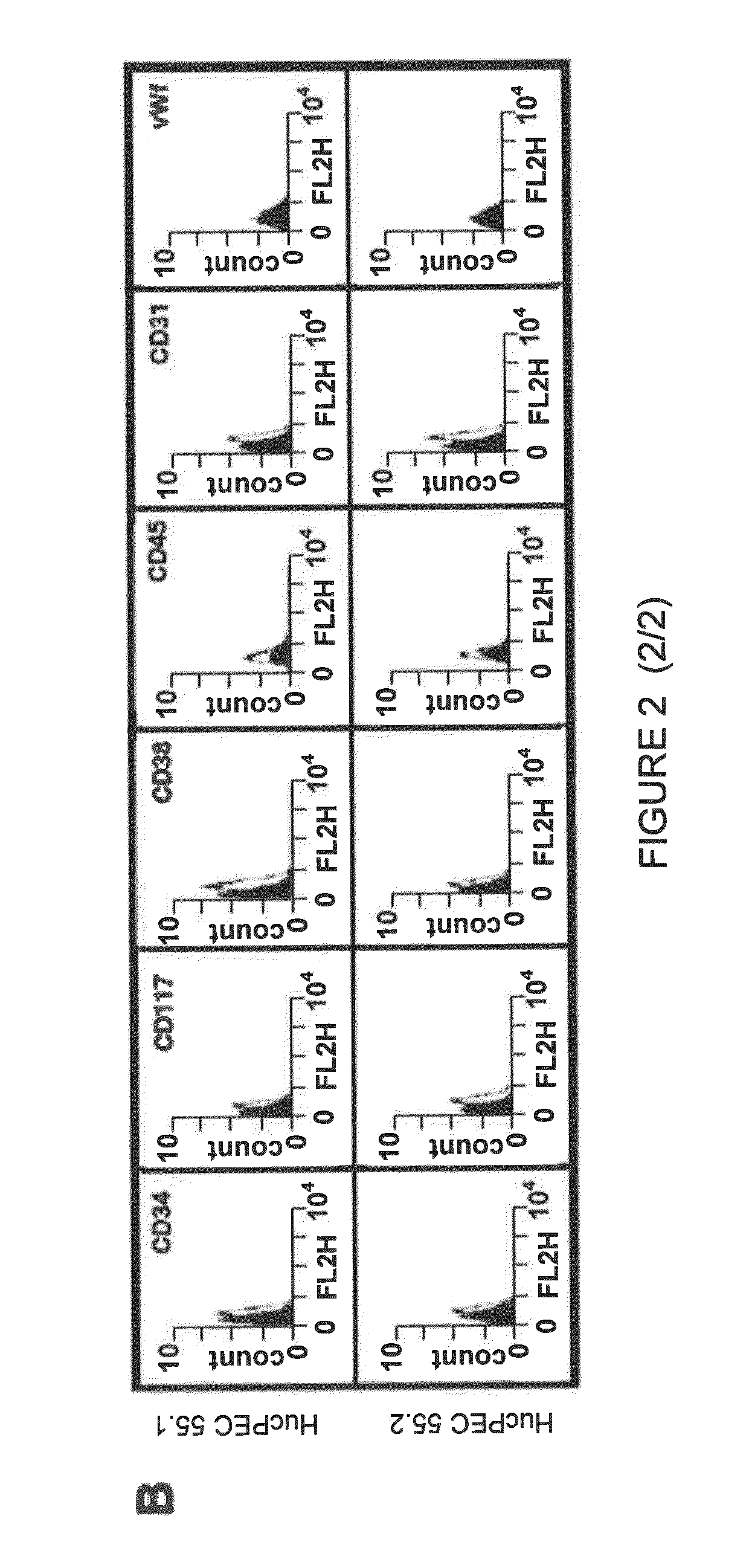Human and murine stem-cell lines: models of endothelial cell precursors
a technology stem cells, which is applied in the field of human and murine stem cell lines : models of endothelial cell precursors, can solve the problems of endothelial cell precursor cells, their identification, their characterization and their true potential for differentiation still controversial, and lack of strict criteria
- Summary
- Abstract
- Description
- Claims
- Application Information
AI Technical Summary
Benefits of technology
Problems solved by technology
Method used
Image
Examples
example 1
Production and Characterization of Isolated Human Endothelial Cell precursor Cells
A Material and Methods
A.1 Blood Samples
[0087]Blood samples were taken from human umbilical cord blood. The cord blood was collected from normal full-term births at the “Chair of Obstetrics and Gynecology” of the Wroclaw medical university. The umbilical vein was pierced with a size 17 needle attached to a sealed recovery bag system containing a solution of citrate phosphate dextrose as anticoagulant for blood bags (marketed by MACO Pharma, Wroclaw, Poland). The volume collected was on average 50-110 ml from one placenta. Written informed consent was obtained from all the mothers prior to labor and childbirth. The protocols for taking samples of human umbilical cord blood were approved by the Bioethics Commission at Wroclaw Medical University.
A.2. Isolation of Mononuclear Cells
[0088]The mononuclear cells of umbilical cord blood were isolated by density gradient centrifugation using Lymphoflot (brand nam...
example 2
Production and Characterization of Isolated Murine Cells that are Endothelial Cell Precursors
A Material and Methods
A1. Isolation of the Cells
[0115]The cells were isolated from the Aorta Gonad Mesonephros (AGM) region of C57BI6 embryos 10.5 and 11.5 dpc (days post coitum).
[0116]The embryos were obtained from crossing of FVB mice obtained from the laboratory Transgenese et Archivage d'Animaux Modéles UPS44 (TAAM) CNRS Orleans.
[0117]After primary culture on primaria plates (Falcon, Becton and Dickinson) in RPMI (“Roswell Park Memorial Institute medium”), the cells were left to grow and the resultant cultures were immortalized as described above for the immortalization of human cells after 4 days, using a plasmid containing the large antigen T SV40 large and cationic liposomes.
[0118]Geneticin-resistant clones were obtained and selected. Various clones were developed and characterized on the basis of the expression of markers of endothelial cells.
[0119]Starting from these clones, two imm...
example 3
Screening of Molecules Permitting Identification of Molecules that can Induce Differentiation and / or Specialization of an Isolated Endothelial Cell Precursor Cell
[0142]The human and murine endothelial cell precursor cells are cultured in 24-well plates (Falcon, Grenoble, France). The culture medium is OptiMEM (brand name) marketed by the company Invitrogen supplemented with 2% of fetal calf serum (FCS) marketed by the company Hyclon, Longan, Utah, USA.
[0143]The cells are then cultivated for 24 hours and then the molecule to be screened is introduced into the culture medium.
[0144]The cells are then cultivated for a time in the range from 24 to 48 hours at a temperature of 37° C.
[0145]After culture for 2 days, the cells are observed for their viability, growth, and differentiation.
[0146]Photographs of the growing cells can be taken with the Axiovert S microscope (brand name) marketed by the company Zeiss Jena, Germany equipped with a Fine Pix 5602 digital camera (brand name) marketed ...
PUM
| Property | Measurement | Unit |
|---|---|---|
| temperature | aaaaa | aaaaa |
| temperature | aaaaa | aaaaa |
| temperature | aaaaa | aaaaa |
Abstract
Description
Claims
Application Information
 Login to View More
Login to View More - R&D
- Intellectual Property
- Life Sciences
- Materials
- Tech Scout
- Unparalleled Data Quality
- Higher Quality Content
- 60% Fewer Hallucinations
Browse by: Latest US Patents, China's latest patents, Technical Efficacy Thesaurus, Application Domain, Technology Topic, Popular Technical Reports.
© 2025 PatSnap. All rights reserved.Legal|Privacy policy|Modern Slavery Act Transparency Statement|Sitemap|About US| Contact US: help@patsnap.com



